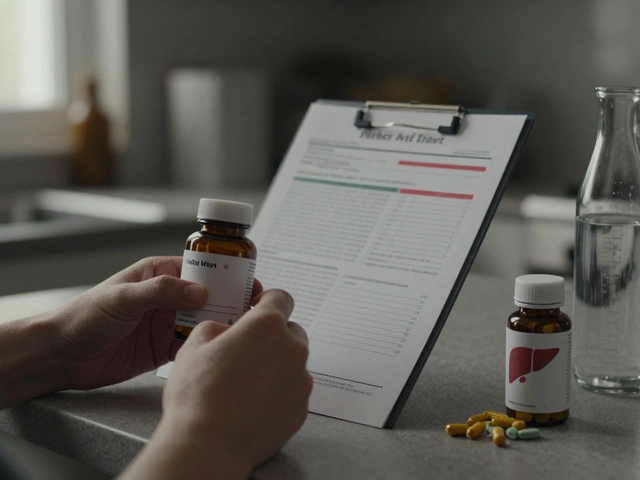- Home
- Orthopedics
- Why Can't You Shower After Knee Surgery? Key Reasons and Tips

Why Can't You Shower After Knee Surgery? Key Reasons and Tips
If you’re frustrated about skipping showers after knee surgery, you’re not alone. The doctor’s orders can feel strict, but there’s a good reason behind it: water and a fresh incision don’t mix well. Even clean-looking tap water can let in bacteria, turning a small cut into a big problem fast.
Most surgeons say to avoid getting your wound wet for at least a week, sometimes longer. That means showers, baths, and even quick rinses are usually off-limits until you get the green light. It’s not about being overly cautious—it’s about avoiding infection, which is a nightmare after joint surgery. One sneaky splash could be enough to let germs inside, mess up your stitches, or slow your healing way down.
Post-surgery infections can put you back in the hospital and might even affect your new knee if they spread. The risk is highest in the first days when the wound hasn’t formed a solid barrier. That’s why nurses tape plastic around incisions and why you keep hearing “wait!” when you ask about the shower.
- The Main Reason: Protecting Your Wound
- Water and Fresh Incisions: What Really Happens
- Why Infection Is a Big Deal After Knee Surgery
- Common Mistakes Patients Make
- When Can You Safely Shower Again?
- Tips for Staying Fresh During Recovery
The Main Reason: Protecting Your Wound
Your knee after surgery is like an open door for germs. The whole reason doctors say “no shower yet” is to keep the wound safe while it starts to heal. Right after a knee replacement, the incision is basically a straight path to deeper tissues—water, dirt, and bacteria can slip in before the new skin barrier is strong enough.
If water gets under your bandages before your surgeon says it’s cool, you risk more than just a little redness. Even just a small infection can make life miserable or send you right back to square one. Did you know infection rates for joint replacements are low—about 1–2%—but when they do happen, they cause serious problems? Treating an infected knee replacement often means more surgery, longer hospital stays, and a recovery that drags on for months.
| Issue | Risk After Knee Surgery (%) | Impact |
|---|---|---|
| Infection | 1-2 | Delays healing, may require more surgery |
| Delayed Wound Healing | Up to 10 | Increases pain, slows rehab |
| Bandage Loosening | Common if wet | Exposes wound, bumps up infection risk |
Your body needs a clean, dry space to patch up that surgical cut. That means every time you shower early or let water get near the bandage, you’re giving bacteria a shot at the end zone. Even showering with a plastic cover isn’t always foolproof—one bad seal, and water seeps in.
The knee replacement incision is especially tricky because you move your knee a lot, so the wound opens and closes until it sets fully. That’s why surgeons say it isn’t worth the risk. Keeping your wound dry for that first week or two is a lot easier than treating a deep infection later.
Water and Fresh Incisions: What Really Happens
Right after knee surgery, your incision is almost like an open door. Even if it looks neat, it's basically a gap in your skin, and that gap is super sensitive to everything—including water. So, what’s the big deal with water getting on your incision?
To start, most of us think tap water is clean, but it’s not sterile. There can be germs in the water or on the surfaces in your bathroom that you can’t see. If those germs land on a freshly stitched wound, they can sneak beneath the skin and create an infection, which no one wants—especially after a knee replacement.
What’s even sneakier, water can dissolve the little scab that’s forming to protect your wound. Think of the scab as nature’s Band-Aid; it needs to stay dry so it can seal your cut. If the scab gets wet too soon, it can break down or fall off, making it so much easier for bacteria to get inside.
Doctors have seen all sorts of problems when patients rush things. Wet wounds can break open. Steri-strips or stitches might loosen, which can slow down your recovery or even leave scars that could’ve been avoided.
- Exposing an incision to water before it’s healed can double your risk of infection, according to a study from the American Academy of Orthopaedic Surgeons.
- It normally takes about 48-72 hours for that top skin layer to seal up enough to hold out basic germs, but your surgeon may want you to wait a full week for safety.
- Warm, moist conditions (like a bathroom) actually help bacteria grow faster—which means they love shower time as much as you do!
| Time Since Surgery | Skin Barrier Strength | Infection Risk |
|---|---|---|
| 0-2 Days | Very Weak | Very High |
| 3-7 Days | Improving | Moderate |
| 7+ Days | Much Stronger | Lower (if incision is closed and dry) |
The bottom line: until your doctor gives the okay, water and your incision are a bad match. Stick to sponge baths or other approved methods to stay clean. If you ever see redness, oozing, or feel sudden pain in your knee after it gets wet, call your doctor right away. Don’t try to tough it out—fast action saves knees.
Why Infection Is a Big Deal After Knee Surgery
After knee replacement surgery, your body is already working hard to heal. The incision is a direct path for germs to get straight to your new joint. If bacteria sneak in, they can cause an infection that’s way more serious than a regular scrape or cut—you’re dealing with artificial material and deep tissue. An infection here won’t just slow recovery; it could end up ruining the new knee entirely.
Why is this such a big deal? Well, your immune system has a tougher time fighting bacteria on and around metal or plastic implants. That’s because germs can stick to these smooth surfaces and form tough biofilms, which are hard for antibiotics to reach. If bacteria start multiplying, you could wind up back in surgery, needing another operation to clean things out—or even replace the implant. Worst case, it could mean months of antibiotics and a really long time using a walker or crutches again.
Here’s a look at how big the infection risk is after knee replacement, according to actual hospital studies:
| Complication | Chance (%) | Possible Outcome |
|---|---|---|
| Surface wound infection | 1–2% | Wound cleaning, extra antibiotics |
| Deep joint infection | 0.5–1% | Possible revision surgery, prolonged antibiotics |
| Implant removal (worst case) | <0.5% | Removal and later replacement |
Doctors take even small infections super seriously because they can spread quickly inside the joint. It's not something you want to risk just for a quick shower. Plus, infections can mean extra weeks in the hospital and higher costs.
Most experts agree: treating an infection after knee surgery is way harder and riskier than just waiting a few extra days to shower. That’s why your surgeon is so strict about keeping the incision dry and covered, especially in that first week or two.

Common Mistakes Patients Make
Lots of folks think a quick shower isn’t a big deal after surgery, but that’s where problems start. One of the biggest mistakes is skipping wound protection—some patients figure the incision’s small, so what can a little water hurt? Turns out, plenty. Any water that sneaks under the dressing can introduce bacteria and raise your infection risk.
Another common mess-up is peeling off bandages early, thinking the air will help the wound heal faster. In fact, ditching your dressing too soon puts the incision at risk, especially in steamy, humid bathroom environments. Doctors wrap that knee for a reason, and early exposure just makes healing harder.
Some people use plastic bags to cover the area while showering, but don’t seal them well. Even a tiny leak can spell trouble. Water-proof bandages aren’t foolproof either—unless a doctor says they’re okay, you shouldn’t trust them right after knee surgery. Plus, scrubbing or using soapy water too close to the wound can break open the skin or dissolve the glue that holds things together.
- Trying to speed up the recovery by getting active too soon—don’t do lunges in the shower to "test" your knee.
- Brushing off redness, drainage, or pain after showering—these signs mean you need to tell your doctor, not just hope it gets better.
- Assuming that water from a handheld shower is safer because it seems gentler. Any water is a risk until the wound fully seals up.
So here’s the deal: Listen to your medical team about knee replacement wound care, even if the rules seem strict. Shortcuts might seem tempting, but they’re not worth weeks or months of dealing with an infected knee.
When Can You Safely Shower Again?
This is the question everyone wants answered after knee surgery. Most people are told to wait around 7 to 10 days before taking a proper shower, but the exact timing depends on your surgeon and how your wound heals. Surgeons usually let you shower when stitches or staples are gone, or when your incision is sealed up and dry—not before.
Current recommendations say that once your wound is closed and dry, and you’ve got the okay from your doctor, you can shower. Don’t peel off those surgical strips or try to judge by guesswork—always ask first. Many times, people rush it, and then things go south fast.
| Type of Surgery | When Most Can Shower* | Precaution |
|---|---|---|
| Standard knee replacement | 7-10 days | Wait for doctor’s approval |
| Minimally invasive | 5-7 days | Incision must be fully closed |
| Complex or revision | 10-14 days | Depends on healing speed |
*Source: American Academy of Orthopaedic Surgeons and hospital aftercare protocols
If you use a waterproof dressing, some doctors let you start a quick shower earlier (think: next day or two). But that dressing can’t have any leaks or lifted edges. The moment it peels or comes loose, you’re back to square one—no water allowed.
This is all about reducing infection risk and protecting your brand new joint. If you absolutely need to clean up before you’re "cleared," grab some unscented wipes or a damp washcloth for a sponge bath, but keep water miles away from the incision. This isn’t just about being clean. Messing up post-op care can mean more pain, more doctor visits, or even more surgery. With knee replacement surgery, a little patience goes a long way.
- Use lukewarm water, never hot, on your first few showers—it’s gentler on healing skin.
- Let water run off naturally; never scrub the incision.
- Pat the area dry with a clean towel, don’t rub.
- If you see redness, swelling, leaking fluid, or weird pain, stop showering and call your surgeon right away.
Tips for Staying Fresh During Recovery
No showers after knee replacement? That doesn’t mean you’re stuck feeling grubby for days. You just need a few workarounds to stay clean and comfortable while your incision heals.
First up—good old sponge baths. You can use a basin of warm water, a gentle soap, and a clean washcloth to clean your armpits, face, neck, and other sweat zones. Just keep your wound completely dry. Some folks also swear by pre-moistened, no-rinse wipes—kind of like the ones hospitals use. These wipes are safe for sensitive skin and super handy when you can’t get up easily.
Dr. Megan Johnson, an orthopedic nurse, puts it this way:
“A thorough sponge bath every day can help reduce your risk of infection, even when you can’t shower. Just focus on drying off completely and avoiding the area around the incision.”
Deodorant is still your friend, and changing clothes every day can make a bigger difference than you might think. Pay extra attention to changing underwear and socks, since sweat can build up fast during downtime. Some people like to use a bit of baby powder or talc under arms or behind the knees to stay dry, but ask your doctor if that’s okay with your bandages.
Let’s break down what people actually use most often after surgery (based on a 2024 patient survey):
| Method | Percentage of Patients |
|---|---|
| No-rinse wipes | 62% |
| Sponge bath | 29% |
| Wet washcloth (partial wipe-down) | 7% |
| Dry shampoo | 2% |
Need to wash your hair? Grab some dry shampoo, which will soak up oil and sweat. Or, get someone to help you tilt your head over a sink while keeping your incision and bandages protected from getting wet.
Here’s what works best for staying fresh until you’re cleared for real showers:
- Use non-scented, gentle no-rinse wipes daily.
- Sponge bathe with warm water, but stay far from the wound.
- Change into clean, loose clothes every day.
- Switch to clean sheets and pillowcases at least once a week.
- Ask a family member for help if you feel off-balance or weak.
Take it slow. It’s all about patience and keeping your healing process on track until you get that long-awaited all-clear for showers again.

Arnav Singh
I am a health expert with a focus on medicine-related topics in India. My work involves researching and writing articles that aim to inform and educate readers about health and wellness practices. I enjoy exploring the intersections of traditional and modern medicine and how they impact healthcare in the Indian context. Writing for various health magazines and platforms allows me to share my insights with a wider audience.
About
Medical Resource Center India is a comprehensive online platform dedicated to providing reliable health information and medical resources in India. Explore a wide range of articles, tips, and advice on medicine, healthcare services, and wellness. Stay informed about the latest developments in Indian medicine and access valuable insights into maintaining a healthy lifestyle. Discover expert guidance and health solutions tailored for every Indian citizen. Your go-to destination for authoritative medical knowledge in India.








